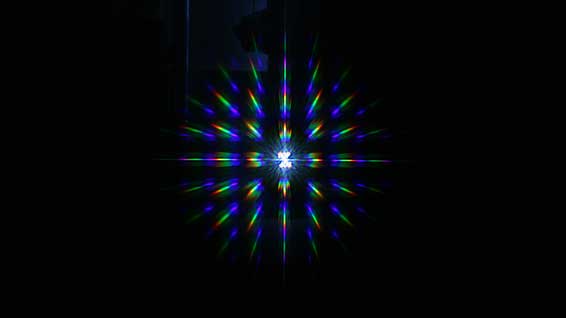7 Apr 2016
Researchers at Heriot-Watt are developing a tamper-proof hologram that could replace serial numbers and barcodes, reducing the trade in counterfeit goods.
Manufacturers of high value goods like electronics and aviation parts etch serial numbers into products, use bar codes or place polymer holographic stickers on the items to provide identification and traceability of products and to assure customers of quality. However, serial numbers and bar codes can be damaged and stickers are vulnerable to tampering and counterfeiting.
A team led by Professor Duncan Hand is using an ultra-violet (UV) nanosecond-pulsed laser to sculpt unique holograms with micro-sized features directly onto the surface of metals, making them tamperproof.
Individual laser pulses provided at a rate of a few kHz melt the surface in an extremely precise, localised way to produce optically-smooth impressions on the metal. By manipulating the laser beam to create specific patterns, holographic structures are produced that can act as security markings for high value products and components.
Dr Krystian Wlodarczyk, a researcher working on the project, said, “The holograms are visible to the naked eye and appear as smooth, shiny textures. They’re robust to local damage and readable by using a collimated beam from a low-cost, commercially-available laser pointer, so border agencies or consumers won’t need expensive technology to check an item’s authenticity. Actually, the holograms can also be read even using a ’flashlight’ from a smart phone.”
“We’ve established that we can create the holograms on a variety of metals. We’re now investigating is how to make them even smaller and more efficient and whether we can apply them to other materials. Recently, for instance, we have extended the process for use of such holograms on glass.”
Precision control
The holograms can generate diffractive images containing characters or logos as required, by a process of melting or a combination of melting and evaporation, with very tiny, sub-micron depth control of the hologram’s individual features (called pixels).
The shape and geometry of the hologram pixels are very important because they affect the optical performance of the holographic structure. To obtain the maximum efficiency (contrast) of the diffractive image produced by the hologram, the pixels must have a certain depth and ideally a flat ‘optically-smooth’ base.
The research was funded by the EPSRC and initial findings have been published in the Journal of Material Processing Technology.















